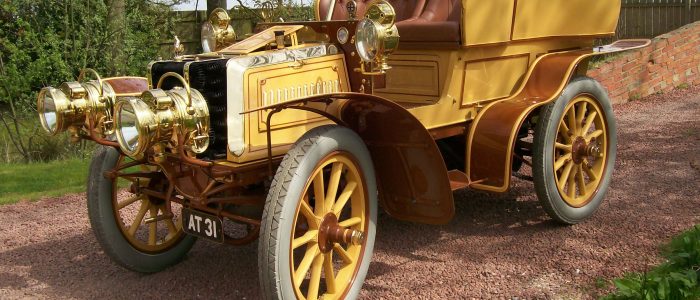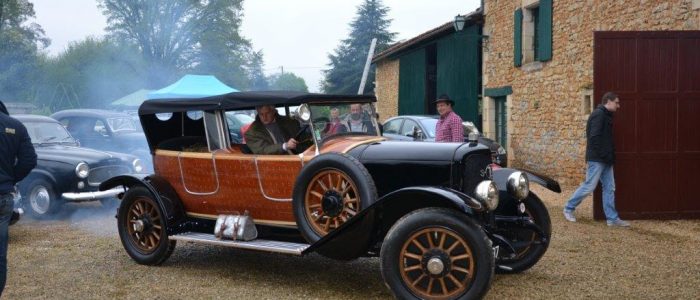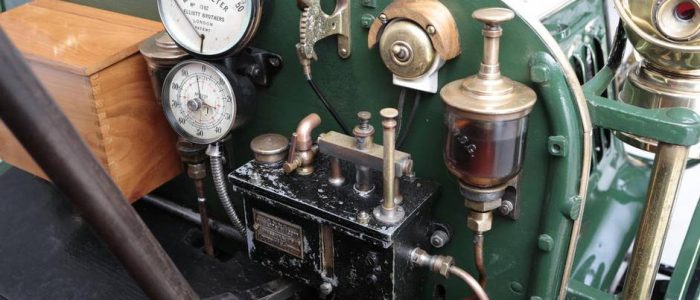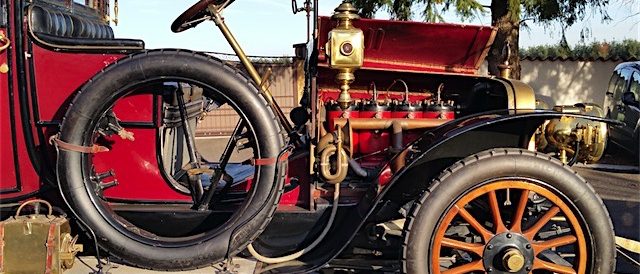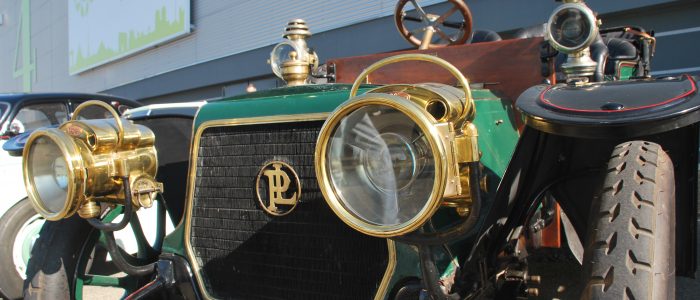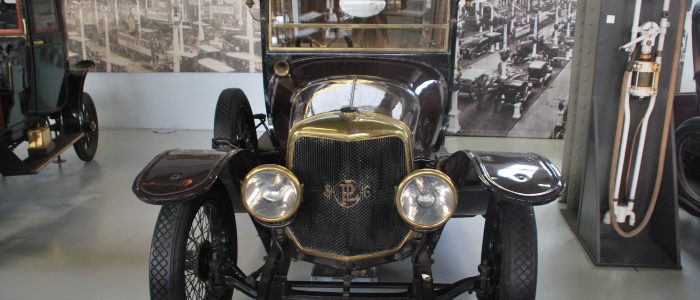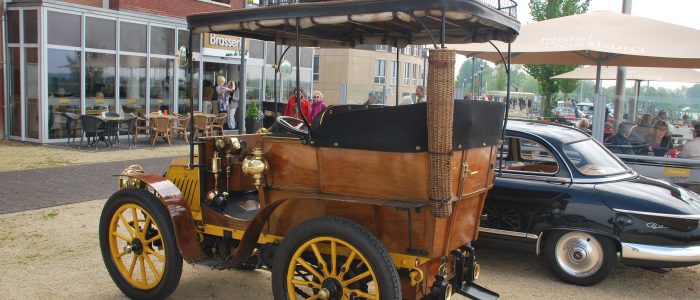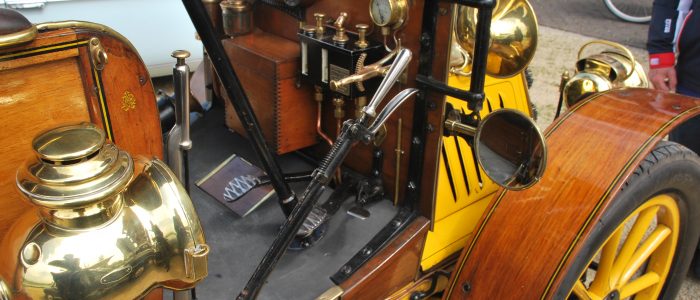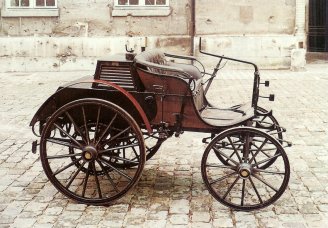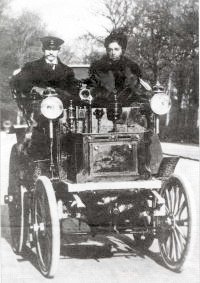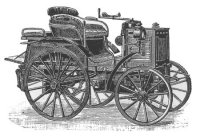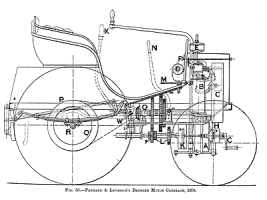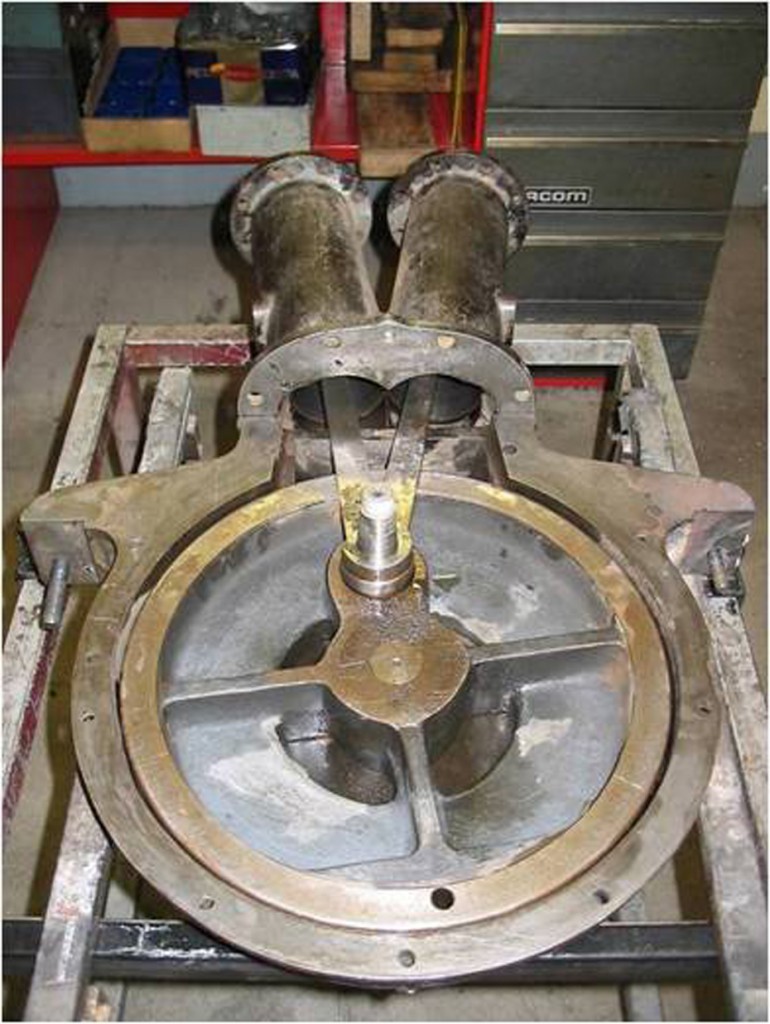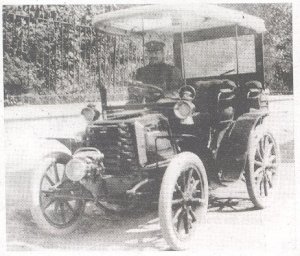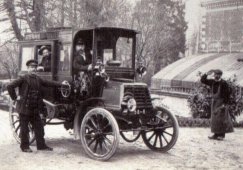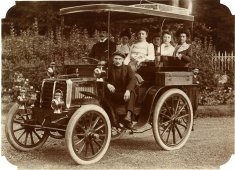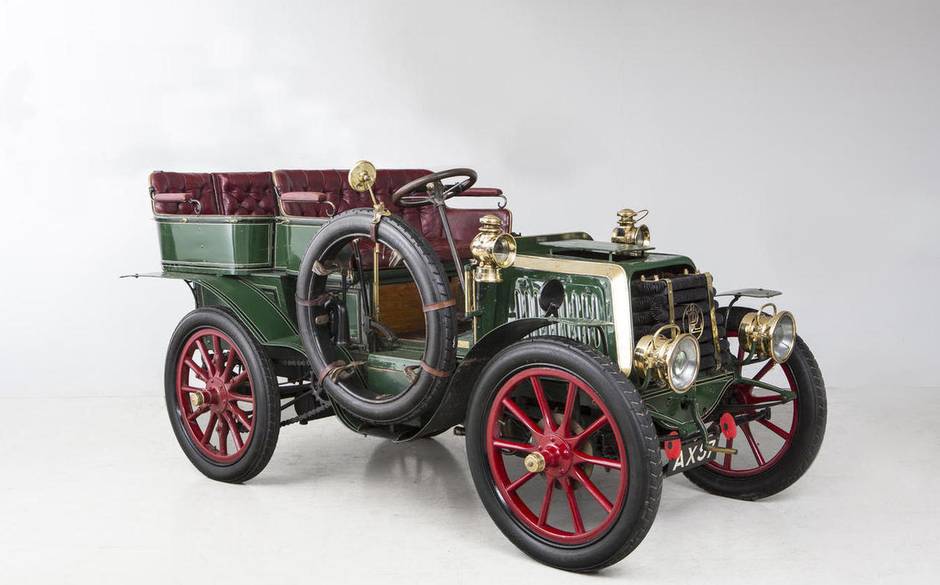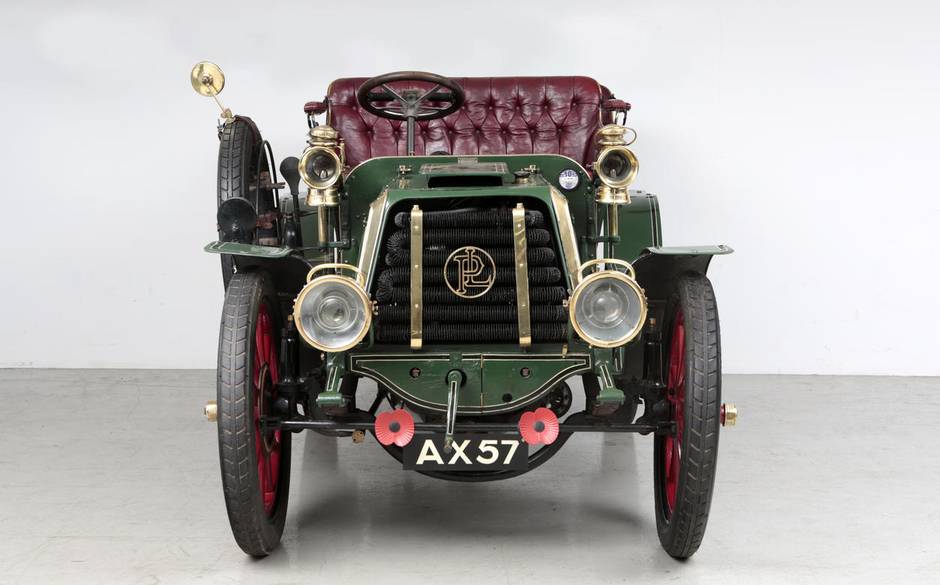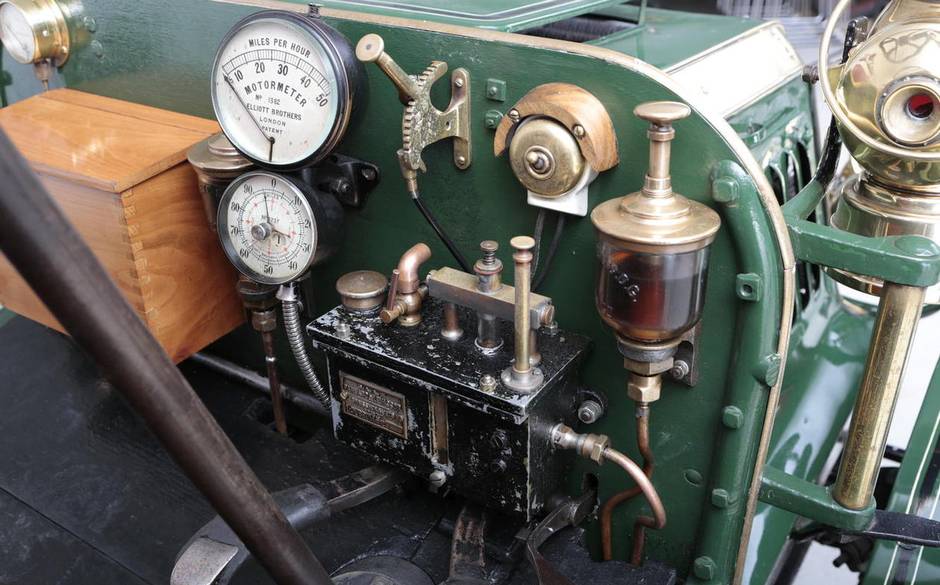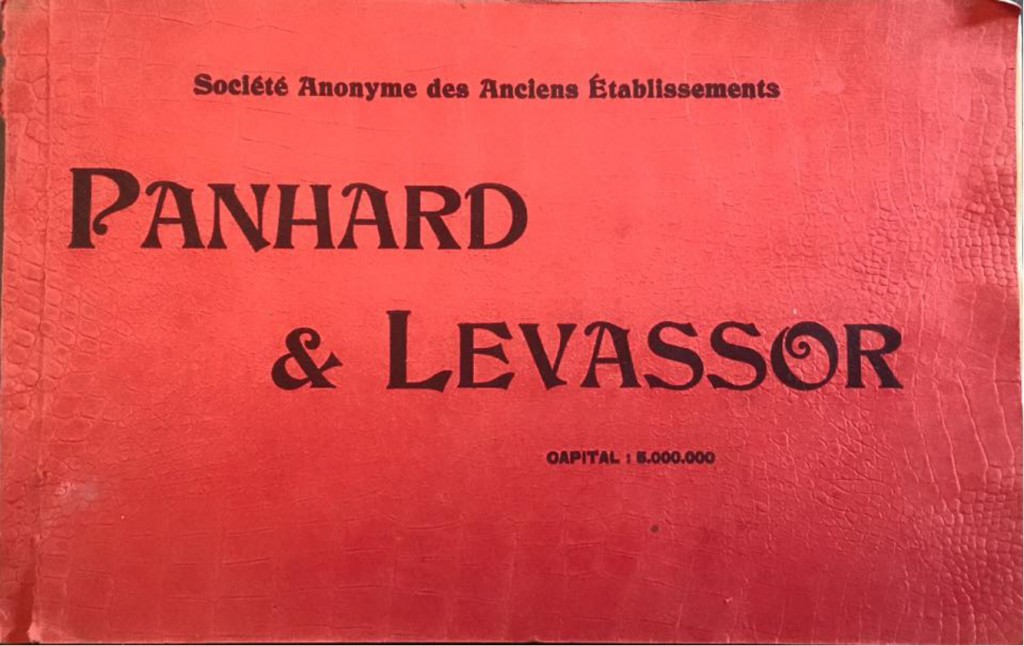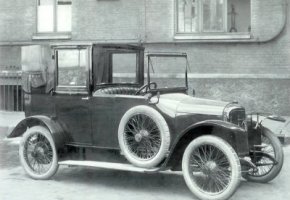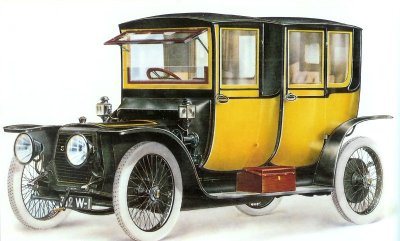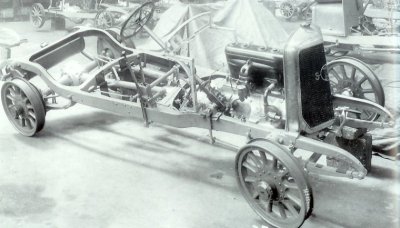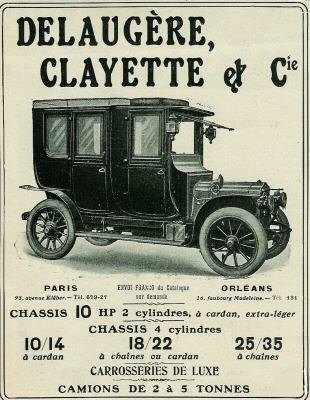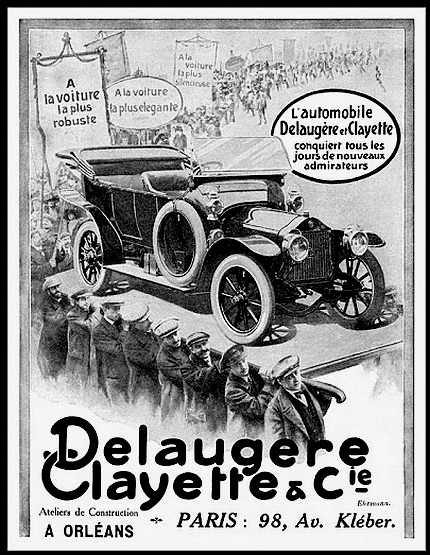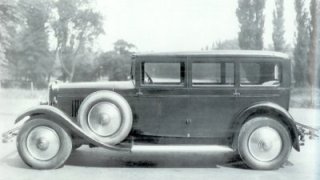From 1890 to the 1920s, the roots and glory …
Several families of vehicles succeeded one another. They generally correspond to families of engines.
The ancestors: The V2 engine Daimler, 1890-1896
Originally, the Panhard Levassor automobiles were based on the Daimler mechanics of which Panhard & Levassor had acquired the manufacturing license for France. It was a two-cylinder V. From 1890, Emile Levassor conceived to install a twin engine in an automobile. After a first prototype, a second more successful car was born in 1891.
The trials being judged conclusive, the decision is made to build a first series of thirty cars, thus making Panhard & Levassor the first manufacturer in the history of the world automobile. Five cars were sold in the first year, in 1891.
In close contact with Peugeot, Panhard & Levassor supplied Daimler V engines from 1890 to 1896. So until around 1904, Panhard & Levassor will be the first French and even world car manufacturer.
During all these years, innovations succeeded thanks to the hard work of Emile Levassor, like a gearbox with three ratios enclosing the pinions in a tight casing.
Un bel exemple de moteur P2D ( source Moteur ventoux Ingénierie
P2D motor during machining
The ancestors: The Phenix engine (1896-1903)
Soon, the Daimler V2 engine proves to be heavy and relatively inefficient. From 1893 Emile Levassor and his friend Gottlieb Daimler work on a brand new engine: the Phoenix. This engine, with two or four cylinders, will really begin his commercial career in 1896.
From the same year 1896, a four-speed gearbox was proposed. In 1898 the steering wheel replaces the cow-tail steering.
The celebrities rolled in Panhard & Levassor Louis Pasteur on the left (car of 1899) and Claude Monet on the right (car of 1901)
Other celebrities who rolled in Panhard & Levassor: Gustave Eiffel, Professor of Arsonval, King of Italy, King of the Belgians, C.S. Rolls who imported and sold PL before joining Royce.
Here a beautiful copy of a B1 1902 12 CV, auctioned in 2013
The engines Centaure (1901-1904) and Centaure “lightened” (1903-1915)
After succeeding Emile Levassor, who died in 1897, Arthur Krebs seeks to free himself of the heavy financial burden that the fees to pay on each Phenix engine represent. Thus in 1901 appeared the new Centaur engine which completely replaced the Phenix of 1902. In this new engine, the cylinders are coupled in groups of two.
That same year, 1902, appeared the carburetor with automatic adjustment which will very quickly adopted by all the car manufacturers. Also appeared a new electric ignition system by dynamo, soon replaced by a magneto ignition.
In 1903, the Centaur engine evolved into a lighter Centaure. The cylinders are now separated, with improved cooling.
In 1908, transmission by cardan is proposed, replacing the transmission by chains, which remains of setting for the highest displacements.
Extract from a catalog of sales of the beginning of the century, allowing to have an overview of the already extensive range of the brand of Avenue d’Ivry;
Note the care taken in the construction of the work and the photos …
Browse the catalog (32 pages):
Manuel-PLLes moteurs monoblocs à soupapes (1909-1924)
With the progress of the foundry, the 12HP type X5 has an all-new four-cylinder engine melted in one block. The motor is thus more compact. Although the valveless engine will soon arrive, this new one-piece engine will continue until 1924, when valves were abandoned until the Second World War.
The highlight of this generation of engines will be the type X19, presented at the end of 1912 and whose effective marketing in 1913, will be a great success because of its real qualities. Number of current collectors will not say the opposite! The X19 is a modern, light and powerful car
The first motors without valves, with cylinders separated or grouped by two (1910-1922)
From 1910, the first road tests were carried out. The engine without valve allows to overcome the disadvantages of the classic engine with valves: vibrations, noise …
The principle is based on a distribution by sliding sleeves (or sleeves). Their sliding around the piston ensures intake and exhaust through lights, with a reduced number of moving parts and a near total lack of play.
Based on the patent of Charles Yale Knight, the system quickly convinced Arthur Krebs. The first cars without valves are presented by Panhard & Levassor in 1910 and actually marketed the following year.
Motors without monobloc valve (1914-1945)
At the end of December 1914 a new 16HP X26 was presented. Its engine is a four-cylinder 3.2-liter valve without a monoblock and will experience a very long career under different evolutions.
As early as 1922, this generation of engines completely replaces conventional valve engines that simply disappear from the catalog.
In 1924, Panhard & Levassor innovates again by deeply modifying its motors without valve. Until then the shirts are made of cast iron. This material has the advantage of possessing good anti-friction characteristics. On the other hand, the high weight prevents high regimes.
Panhard & Levassor replaces heavy, thick cast iron liners with thin steel jackets three times lighter. To avoid seizure, the external jacket, less thermally stressed, is regulated. The lubrication is also largely dimensioned, which explains the characteristic plume that follows a motor car without valve …
All engines gain in speed and performance.
In 1925 Panhard & Levassor absorbed Delaugere and Clayette. This old Orlean company becomes the body shop of house. The organization of production at Panhard & Levassor remains very traditional and has nothing to do with the ultra modern factories of the great ones that are Peugeot, Renault and especially Citroën.
The valveless engine involves high manufacturing costs, which are not very compatible with small-displacement vehicles. For example, the Panhard 10CV roadster without valve X37 is displayed 24900 francs in 1922, when the 10CV Citroën is offered at only 13900 francs.
The cars of the mark are rather destined to the bourgeoisie. The range is plethoric and globally top of the range.
In 1926 Panhard & Levassor followed the fashion of the six-cylinder engines, coming from the United States, with the 16CV X57 then the 10CV X59 in 1927 with “silent” gearbox and finally the 12CV X63 in 1928.
Here again the manufacturing costs of the valveless motor are limited to Panhard & Levassor has a marginal role: in 1929 the 10CV six-cylinder X59 factory sedan is displayed 55,000 francs, compared to the 32,600 francs of a Citroën C6 sedan …
The independent body builders made beautiful bodies on Panhard bases, here Pourtout designed this cabriolet on base 20 Cv for the famous dealer Darl’mat
